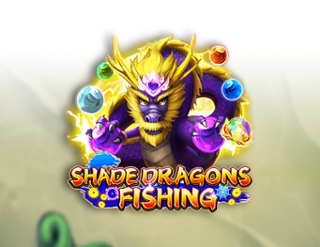Master the art of bluffing and strategy with Liar’s Dice on MayaGame – where deception and skill lead to victory.
Liar’s Dice is the perfect blend of strategy, deception, and luck, making it a favorite for players who enjoy testing their bluffing skills. Whether you’re playing casually with friends or using it to sharpen your gambling tactics, Liar’s Dice offers endless fun and excitement. Let’s explore how to play this classic game on MayaGame and use it to your advantage.
What Is Liar’s Dice?
Liar’s Dice is a traditional dice game where players secretly roll their dice and then place bids on how many dice show a particular face value across all players. The twist? Players can bluff about their bids, and opponents must decide whether to believe them or call their bluff. The ultimate goal is to be the last player with dice remaining.
History of Liar’s Dice
With a history dating back over 500 years, Liar’s Dice originated in China (as Chui Niu) and South America (as Dudo). The game spread globally thanks to traders, sailors, and explorers, and has been played by pirates and soldiers. Today, Liar’s Dice is widely enjoyed in board games, casinos, and digital versions on online platforms like MayaGame.
How to Play Liar’s Dice on MayaGame
To play Liar’s Dice, you’ll need a few essential tools:
- Five six-sided dice per player
- One opaque cup per player (to keep dice hidden)
- A flat surface to roll the dice
Here’s a step-by-step guide on how to play on MayaGame:
- Set Up the Game:
- Each player receives 5 dice and a cup.
- Players secretly roll their dice and view them, keeping them hidden from others.
- Each player receives 5 dice and a cup.
- Determine Who Goes First:
- The first player is chosen randomly or based on group agreement.
- The first player is chosen randomly or based on group agreement.
- Making a Bid:
- The first player makes a bid by guessing how many dice of a specific number are showing across all players. A bid consists of a quantity (e.g., “Five”) and a face value (e.g., “Threes”).
- Example: A bid of “five threes” means the player believes there are at least five dice showing the number 3.
- The first player makes a bid by guessing how many dice of a specific number are showing across all players. A bid consists of a quantity (e.g., “Five”) and a face value (e.g., “Threes”).
- Next Player’s Turn:
- The next player can either increase the bid (quantity or face value) or challenge the previous bid.
- Players cannot pass their turn in this version of the game.
- The next player can either increase the bid (quantity or face value) or challenge the previous bid.
- Calling ‘Liar’ and Checking Dice:
- If someone calls “Liar,” all players reveal their dice.
- If the bid is valid, the challenger loses a die. If the bid was a bluff, the bidder loses a die.
- The round continues with the loser starting the next round.
- If someone calls “Liar,” all players reveal their dice.
- Winning the Game:
- The game continues until only one player remains with dice.
- The game continues until only one player remains with dice.
Liar’s Dice Rules
Here are some key rules to keep in mind when playing Liar’s Dice on MayaGame:
- Bids must always be higher than the previous one in terms of either quantity or face value.
- 1s are wild in some versions (e.g., the South American version of the game), meaning they can represent any number.
- If a player loses all their dice, they are eliminated from the game.
- Challenges can only be made by the player immediately following the current bidder. (Some house rules may allow challenges out of turn with consequences).
Best Strategies and Tips to Win at Liar’s Dice
To master Liar’s Dice on MayaGame, you need a mix of strategy, probability, and psychology. Here are some pro tips to help you win:
- Bluff Smartly:
- Bluffing is essential but don’t make it too obvious. If you have three dice showing a number, bidding a bit higher than that can make your bluff more believable.
- Bluffing is essential but don’t make it too obvious. If you have three dice showing a number, bidding a bit higher than that can make your bluff more believable.
- Read Your Opponents:
- Pay attention to your opponents’ betting patterns and body language. Look for hesitation or overconfidence, which may signal a bluff.
- Pay attention to your opponents’ betting patterns and body language. Look for hesitation or overconfidence, which may signal a bluff.
- Use Probability to Your Advantage:
- The more dice in play, the more likely you are to see a specific number. If 1s are wild, expect a number to show up on roughly 1/3 of all dice.
- The more dice in play, the more likely you are to see a specific number. If 1s are wild, expect a number to show up on roughly 1/3 of all dice.
- Control the Pace of the Game:
- Keep the bidding tempo unpredictable. Look for opportunities to raise the bid without risking your own position.
- Keep the bidding tempo unpredictable. Look for opportunities to raise the bid without risking your own position.
- Utilize the Last Die Advantage:
- When you’re down to your last die, make careful bids. Calculate the chances based on the number of dice remaining and adjust your strategy accordingly.
- When you’re down to your last die, make careful bids. Calculate the chances based on the number of dice remaining and adjust your strategy accordingly.
Variations of Liar’s Dice
Liar’s Dice has many variations, each adding a new layer of strategy and fun. Here are some of the most popular versions you might encounter on MayaGame:
- Classic Liar’s Dice:
- The traditional version with 5 dice per player and hidden rolls. Players take turns raising the bid or calling a bluff.
- The traditional version with 5 dice per player and hidden rolls. Players take turns raising the bid or calling a bluff.
- Single-Hand Liar’s Dice:
- A one-on-one version where players bet based on their own dice rather than a shared pool.
- A one-on-one version where players bet based on their own dice rather than a shared pool.
- Common-Hand Liar’s Dice:
- All dice are placed in the center and visible to everyone. Bluffing becomes more psychological in this version.
- All dice are placed in the center and visible to everyone. Bluffing becomes more psychological in this version.
- Mexican Liar’s Dice:
- Known for “wild 1s” and unique combinations, this version adds a poker-style twist to the game.
- Known for “wild 1s” and unique combinations, this version adds a poker-style twist to the game.
- Elimination Liar’s Dice:
- Players lose dice when caught bluffing or challenging incorrectly. The last player with dice wins.
- Players lose dice when caught bluffing or challenging incorrectly. The last player with dice wins.
Fun Facts & Pop Culture References
Liar’s Dice has made appearances in pop culture, adding to its mystique and popularity:
- Pirates of the Caribbean: Dead Man’s Chest: In this film, Will Turner, Bootstrap Bill, and Davy Jones’ crew play a high-stakes game of Liar’s Dice aboard the Flying Dutchman. The scene became iconic for its intense bluffing and unique Kraken-themed dice.
- Perudo: A South American version of Liar’s Dice, Perudo uses special rules like wild 1s and the “Exacto” call, where players can regain a die if they’re right. It’s often played as a drinking game.
- Video Games: Liar’s Dice also appears in games like Red Dead Redemption, where players can engage in digital dice games, and Assassin’s Creed IV, where pirates take a break from their plundering to test their luck and bluffing skills.
Is Liar’s Dice the Right Game for You?
Liar’s Dice isn’t just about rolling dice—it’s a thrilling mix of deception, strategy, and psychology. Whether you’re playing casually with friends, sharpening your gambling skills, or diving into its cultural roots, Liar’s Dice is guaranteed to keep you entertained. With its rich history, exciting variations, and its place in pop culture, it’s a timeless game that will never lose its appeal.
So grab your dice, prepare your best poker face, and start bluffing your way to victory on MayaGame today.















